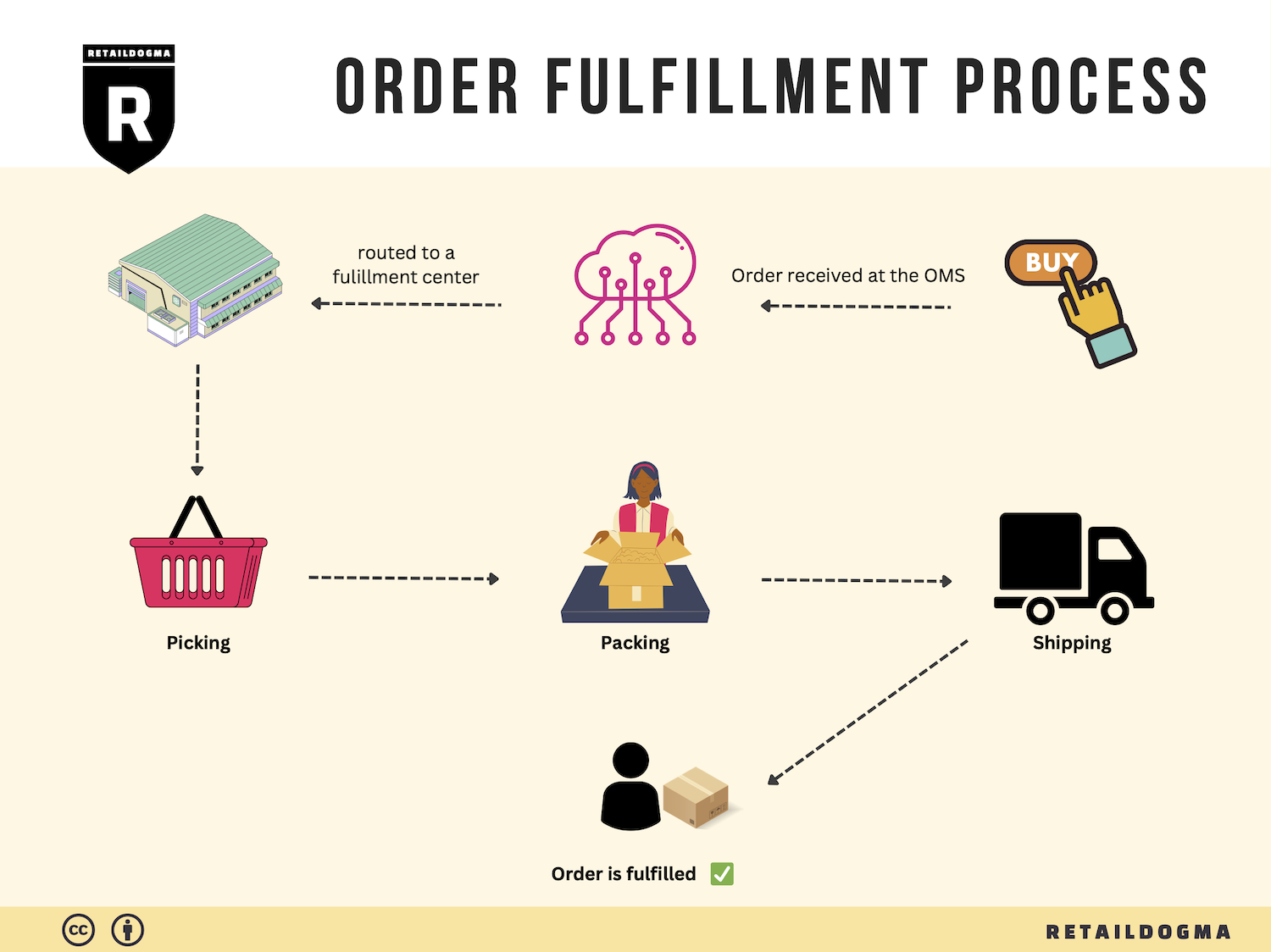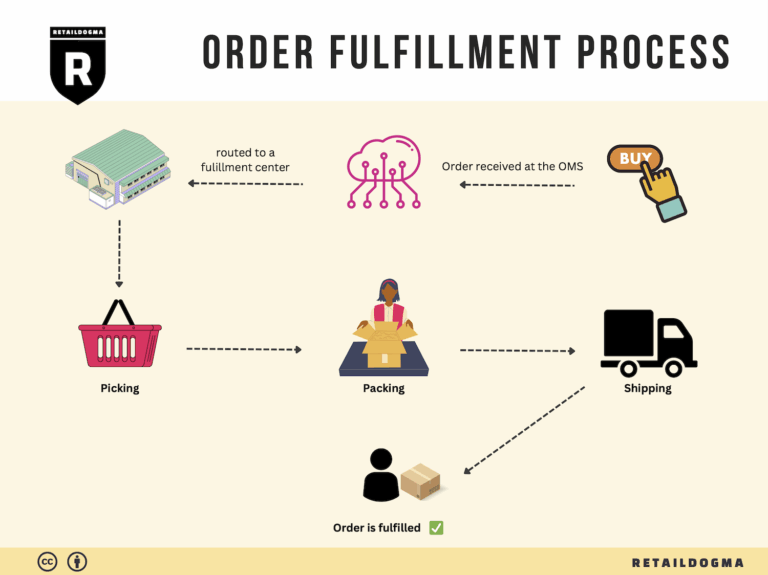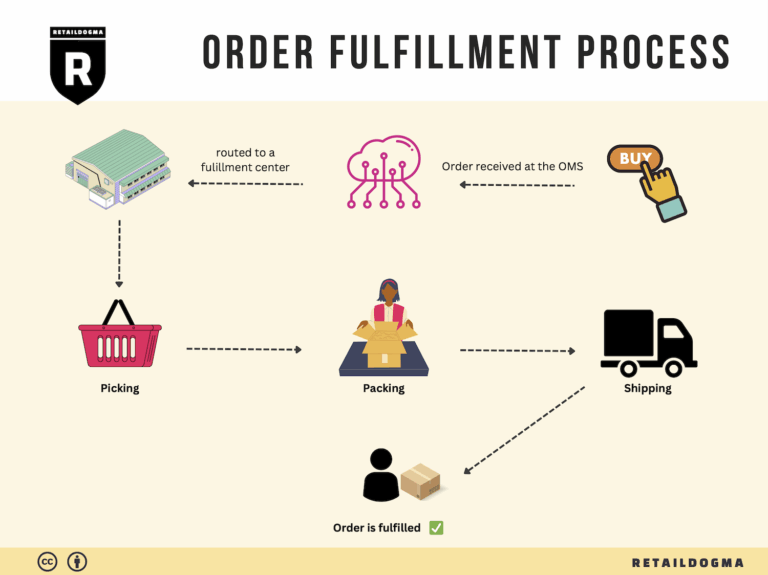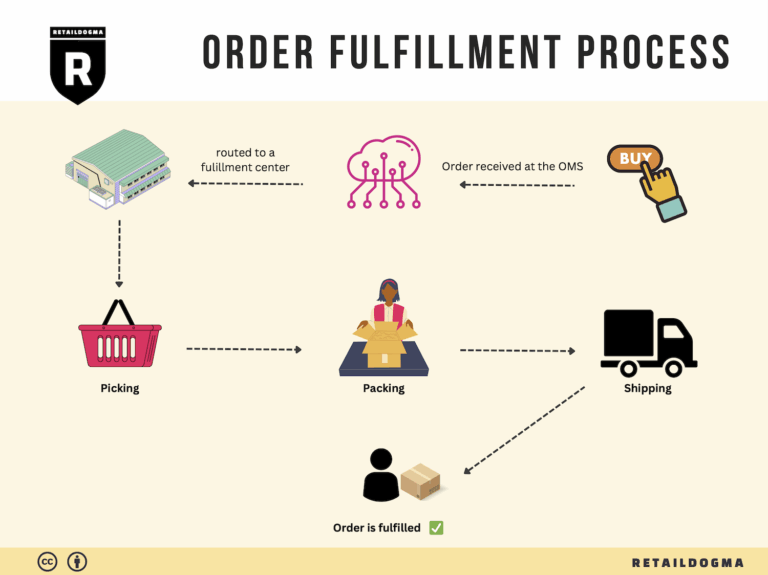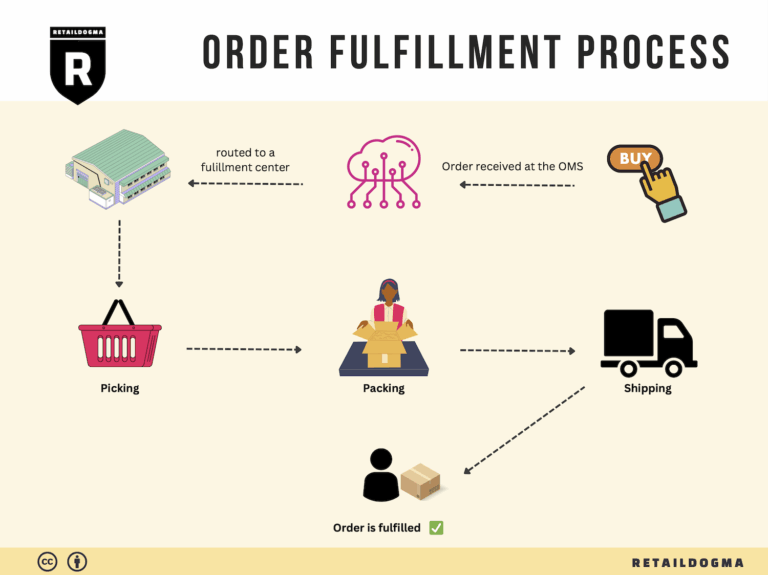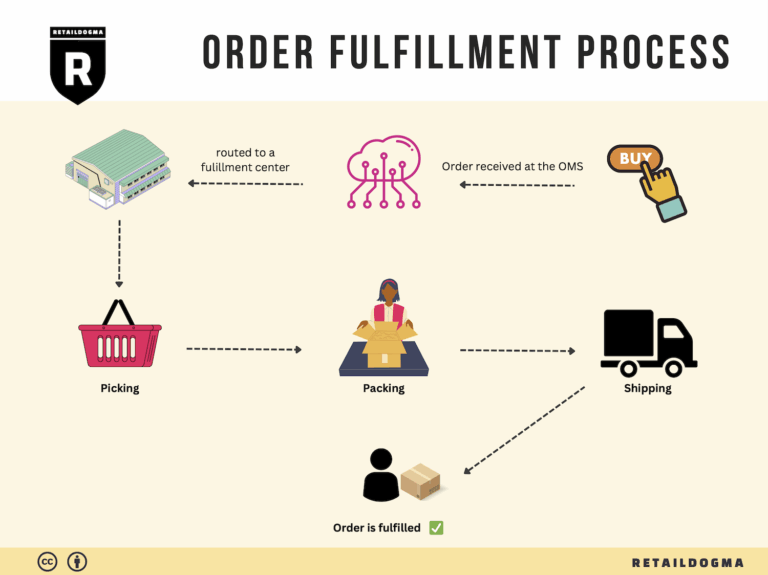What Is A Fulfillment Center? A Complete Guide (2025)
What is E-commerce Fulfillment? An Introduction for Growing Businesses
Understanding E-commerce Fulfillment: A Pathway to Efficiency
For many growing e-commerce businesses, the journey from order placement to customer delivery can quickly become overwhelming. As sales increase, so does the volume of orders, leading to a flood of packing, shipping, and managing returns. This complexity can distract business owners from focusing on core activities like marketing and product development. E-commerce fulfillment, in its simplest form, is the process of getting a product to a customer. It encompasses everything from receiving inventory and processing orders to shipping products and handling returns.
In this guide, we aim to demystify the world of e-commerce fulfillment and provide you with the knowledge to make informed decisions that can streamline your logistics operations. We will explore various fulfillment models, including Third-Party Logistics (3PL) and Fulfillment by Amazon (FBA), each with its own advantages and challenges. Understanding these models is essential for selecting the right approach that aligns with your business objectives and customer expectations.
Core fulfillment services are integral to the success of your e-commerce operations. We will break down essential components such as inventory management, order processing, shipping logistics, and returns handling. By grasping these core services, you’ll be better positioned to evaluate your current operations and identify areas for improvement.
Choosing the right fulfillment partner is another critical decision that can significantly impact your business. Factors such as location, service offerings, technology integration, and pricing structures play crucial roles in this choice. We will provide practical tips and criteria to consider when selecting a partner that aligns with your growth strategy.
Lastly, pricing is often a major concern for e-commerce businesses, particularly when scaling operations. We will discuss various pricing models and hidden costs associated with fulfillment services, helping you to navigate the landscape with confidence.
The ultimate goal of this guide is to empower you, the business owner or operations manager, to make smart, strategic decisions about your logistics. By understanding the ins and outs of e-commerce fulfillment, you can enhance operational efficiency, improve customer satisfaction, and ultimately drive growth in your business.
What You’ll Learn In This Guide
- What is E-commerce Fulfillment? An Introduction for Growing Businesses
- The Order Fulfillment Process: From ‘Buy’ Button to Customer’s Door
- Comparing Fulfillment Models: In-House vs. 3PL vs. Dropshipping
- A Deep Dive into Amazon FBA: Pros, Cons, and Who It’s For
- Core Services Offered by Fulfillment Centers
- How to Choose a Fulfillment Partner: A 6-Point Checklist
- Understanding Fulfillment Pricing: A Breakdown of Common Fees
- Frequently Asked Questions (FAQs) about Fulfillment
- Conclusion: Is Outsourcing Fulfillment the Right Move for Your Business?
- Important Disclaimer
The Order Fulfillment Process: From ‘Buy’ Button to Customer’s Door
1. Receiving Inventory
The order fulfillment process begins with receiving inventory from suppliers. This step is crucial as it sets the foundation for effective inventory management. Upon arrival, products are checked against purchase orders to ensure accuracy in quantity and quality. Key terms associated with this step include SKU (Stock Keeping Unit), which helps in identifying products uniquely.
Efficient receiving processes prevent stock discrepancies and inaccuracies, which can lead to lost sales and unhappy customers. Properly received inventory is then recorded in the warehouse management system (WMS), allowing for real-time tracking of stock levels. This tracking is vital for maintaining optimal inventory levels and ensuring that products are available when customers place orders.
2. Warehouse Storage
Once the inventory is received, the next step is warehouse storage. Proper organization of products within the warehouse is essential for operational efficiency. Products are typically stored based on various strategies, such as by category, size, or frequency of sales. The use of bin locations or designated storage areas enhances retrieval speed and accuracy.
Effective warehouse storage reduces the time and effort needed to locate items during order picking. Additionally, a well-organized warehouse minimizes the risk of damage and loss, ensuring that products remain in sellable condition. Utilizing technology, such as barcode scanning or RFID systems, further streamlines the storage process and aids in maintaining accurate inventory records.
3. Order Picking
Order picking is the process of retrieving items from their storage locations to fulfill customer orders. This step is critical because it directly impacts order accuracy and fulfillment speed. The creation of pick lists—documents that specify the items and quantities needed for an order—facilitates efficient picking.
There are several picking methods, including single order picking, batch picking, and zone picking, each with its advantages depending on the volume and type of orders. Implementing a systematic approach to order picking helps ensure that the right items are selected and reduces errors. The accuracy of this step is paramount; even minor mistakes can lead to returns, exchanges, and customer dissatisfaction.
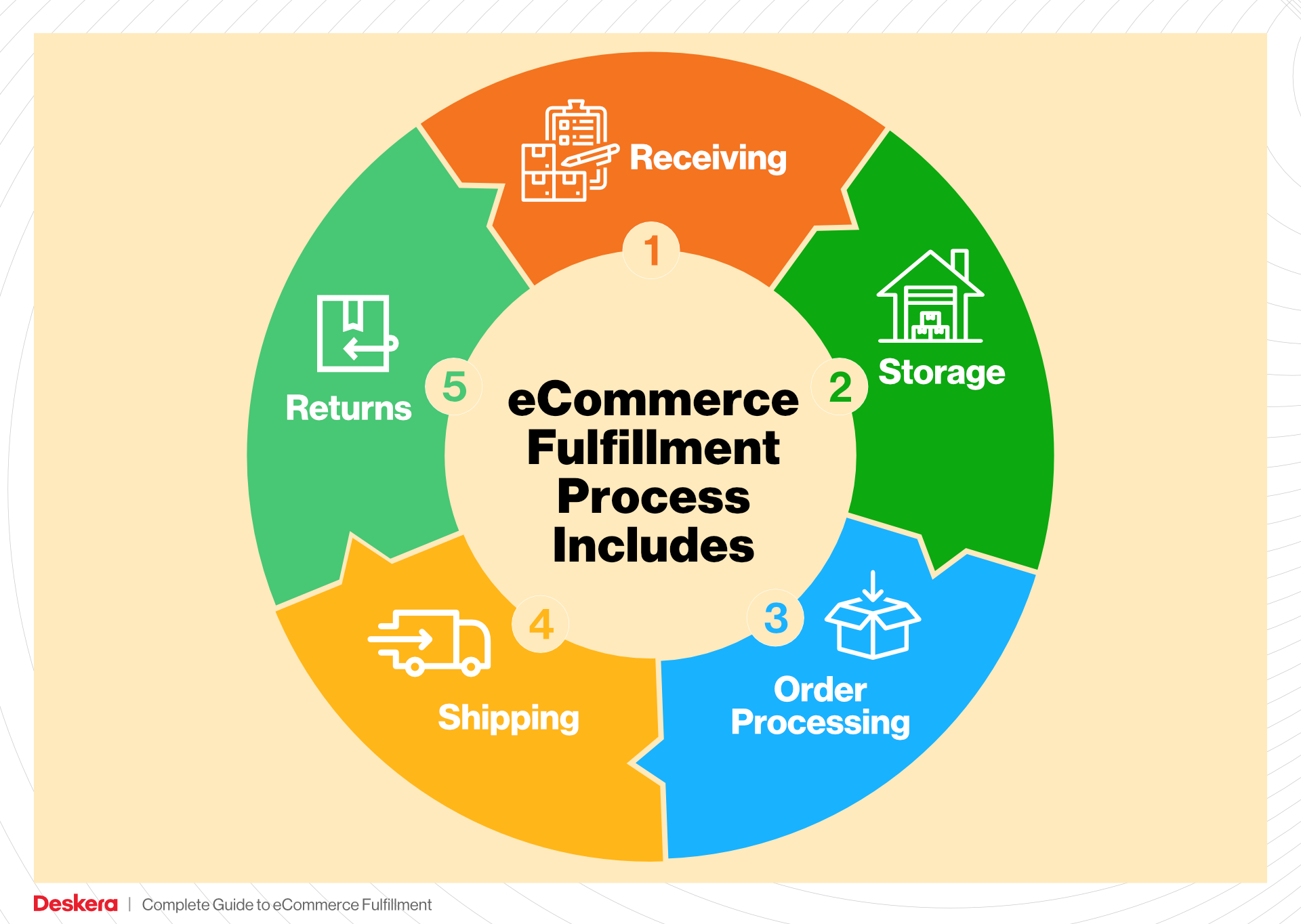
4. Order Packing
After items have been picked, they move to the packing stage. This step involves preparing the products for shipment, ensuring they are securely packaged to prevent damage during transit. Important considerations during packing include the use of appropriate packing materials, such as bubble wrap or packing peanuts, and the design of customized packaging that reflects the brand identity.
Effective packing not only safeguards products but also enhances the customer experience. A well-packaged order can create a memorable unboxing moment that fosters brand loyalty. Additionally, efficient packing processes can optimize shipping costs, as minimizing package size and weight can lead to lower shipping fees. This step is vital for maintaining high standards of customer service and operational efficiency.
5. Shipping & Delivery
The final step in the order fulfillment process is shipping and delivery. Once orders are packed, they are handed over to carriers for transportation to the customer. This step is critical as it determines the speed and reliability of delivery—two factors that significantly influence customer satisfaction. Key terms in this phase include shipping labels and tracking numbers, which enable both the business and customers to monitor the shipment’s progress.
Selecting the right shipping methods and carriers can optimize costs and delivery times. Many fulfillment companies offer integrated solutions that automate shipping processes, selecting the most cost-effective carrier based on package size, weight, and destination. Timely and accurate delivery not only meets customer expectations but also enhances the brand’s reputation in a competitive e-commerce landscape.
In conclusion, each step of the order fulfillment process is interconnected and plays a vital role in ensuring customer satisfaction and operational efficiency. By understanding and optimizing these steps, e-commerce businesses can scale effectively while maintaining a high level of service.
Comparing Fulfillment Models: In-House vs. 3PL vs. Dropshipping
Fulfillment Model Comparison
| Model | Who Handles Inventory | Best For (Business Stage) | Key Advantage | Key Disadvantage |
|---|---|---|---|---|
| In-House Fulfillment | Business itself | Established businesses | Full control over inventory and processes | High operational costs and resource-intensive |
| Third-Party Logistics (3PL) | External fulfillment partner | Growing to scaling businesses | Cost-effective scaling with expertise | Less control over the fulfillment process |
| Dropshipping | Supplier or manufacturer | Startups and small businesses | Low upfront investment and risk | Lower profit margins and potential quality issues |
In-House Fulfillment
In-house fulfillment involves managing all aspects of the order fulfillment process internally. This includes inventory management, order processing, packing, and shipping. Businesses that opt for in-house fulfillment typically have a dedicated warehouse space and staff to handle these operations. This model is ideal for established businesses that have stable sales and sufficient capital to invest in warehouse infrastructure and personnel.
The key advantage of in-house fulfillment is the control it offers over the entire process. Businesses can tailor their fulfillment operations to align perfectly with their brand standards, ensuring that every aspect of the customer experience reflects their values. Additionally, having direct oversight of inventory can lead to improved accuracy in order fulfillment and enhanced responsiveness to customer inquiries.
However, the main drawback of in-house fulfillment is the high operational costs associated with staffing, warehousing, and maintaining inventory. As businesses scale, these costs can become burdensome, particularly if demand fluctuates. Moreover, handling logistics in-house requires a significant investment of time and resources, which may detract from focusing on core business activities such as product development and marketing.
Third-Party Logistics (3PL)
Third-party logistics (3PL) providers are external companies that manage various aspects of fulfillment on behalf of businesses. This can include warehousing, inventory management, order processing, and shipping. 3PLs are particularly beneficial for businesses that are in the growth phase and need to scale their logistics capabilities without incurring the overhead costs of in-house fulfillment.
One of the primary advantages of using a 3PL is the cost-effectiveness and expertise they bring to the table. By leveraging a 3PL, businesses can benefit from the provider’s established networks, technology, and processes, often resulting in lower shipping rates and faster delivery times. Additionally, many 3PLs offer flexible contracts and services, allowing businesses to adapt their logistics strategy as they grow.
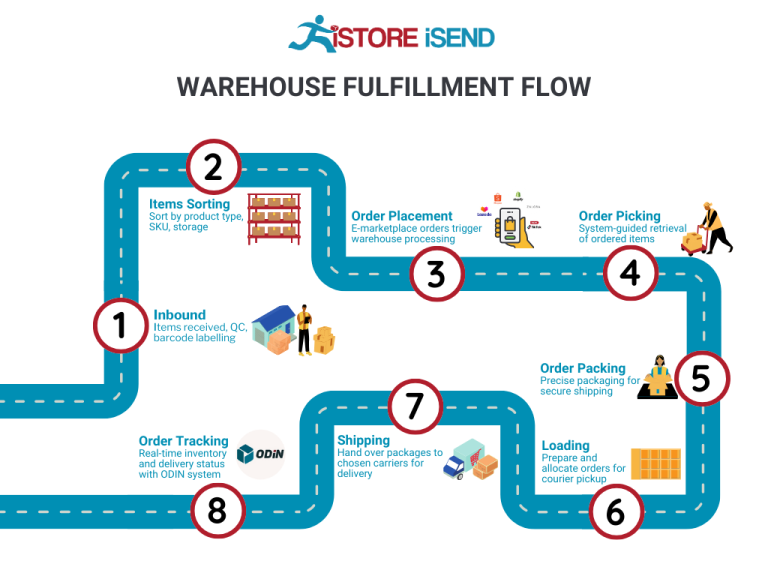
On the downside, partnering with a 3PL means relinquishing some control over the fulfillment process. Businesses may encounter challenges with communication and coordination, which can lead to inconsistencies in service quality. Furthermore, the reliance on an external partner means businesses must ensure their chosen 3PL aligns well with their brand values and customer service expectations.
Dropshipping
Dropshipping is a fulfillment model where businesses sell products without holding inventory. Instead, when a customer places an order, the business purchases the item from a third-party supplier, who then ships it directly to the customer. This model is particularly appealing for startups and small businesses, as it requires minimal upfront investment and significantly reduces financial risk.
The primary advantage of dropshipping is the low barrier to entry. Businesses do not need to invest in inventory or warehouse space, allowing them to test markets and product lines without substantial financial commitment. This model also enables entrepreneurs to offer a wide range of products without the complexities of managing stock levels or logistics.
However, dropshipping is not without its challenges. One of the significant drawbacks is the lower profit margins, as businesses often pay a premium for the convenience of not handling inventory. Additionally, since the fulfillment process is entirely in the hands of suppliers, quality control can be an issue, leading to potential discrepancies in product quality and shipping times. This lack of control can impact customer satisfaction and brand reputation, making it crucial for businesses to carefully vet their suppliers and establish clear communication channels.
Conclusion
Choosing the right fulfillment model depends on the specific needs and stage of your business. In-house fulfillment offers control but comes with higher costs, while 3PL provides a scalable solution with expert support at the expense of some control. Dropshipping presents a low-risk entry point for new entrepreneurs but may lead to challenges in profitability and quality assurance. By understanding the strengths and weaknesses of each model, e-commerce businesses can make informed decisions that align with their operational goals and growth strategies.
A Deep Dive into Amazon FBA: Pros, Cons, and Who It’s For
Understanding Fulfillment by Amazon (FBA)
Fulfillment by Amazon (FBA) is a service offered by Amazon that enables e-commerce sellers to store their products in Amazon’s fulfillment centers. In turn, Amazon takes care of storage, packaging, and shipping directly to customers. This service also includes customer service and returns handling, allowing sellers to focus more on their business strategy rather than logistics. When a customer orders a product that is fulfilled by Amazon, the order is processed through Amazon’s sophisticated logistics network, ensuring efficient delivery.
How FBA Works
- Sign Up for FBA: Sellers need to create an Amazon seller account and enroll in the FBA program.
- List Your Products: Once enrolled, sellers can list their products on Amazon and select which items they wish to fulfill through FBA.
- Ship Inventory to Amazon: Sellers prepare their products according to Amazon’s guidelines and ship them to designated Amazon fulfillment centers.
- Storage and Management: Amazon stores the inventory in its warehouses, managing it through its advanced inventory management systems.
- Order Processing: When a customer places an order, Amazon picks, packs, and ships the product directly to the customer.
- Customer Service and Returns: Amazon handles customer inquiries, returns, and refunds, providing a seamless experience for both sellers and customers.
Pros of Fulfillment by Amazon (FBA)
1. Prime Eligibility
One of the standout advantages of FBA is that products become eligible for Amazon Prime, which is crucial for tapping into a vast customer base. Prime members often prefer products with Prime eligibility, as they can enjoy free two-day shipping, increasing the likelihood of sales.
2. Customer Trust
Amazon has built a strong reputation for reliability and service. By using FBA, sellers can leverage this trust, as customers often feel more confident purchasing products fulfilled by Amazon. Positive experiences lead to higher ratings and reviews, which are essential for long-term success on the platform.
3. Multi-Channel Fulfillment
FBA is not limited to Amazon sales alone. Sellers can use FBA to fulfill orders from other sales channels, such as their own websites or eBay, allowing for a streamlined inventory and order management process. This flexibility enables sellers to reach customers on multiple platforms while benefiting from Amazon’s logistics capabilities.
4. Scalable Operations
FBA allows sellers to scale their operations without the need for significant investment in warehousing or logistics. As demand increases, sellers can send more inventory to Amazon without worrying about the logistics of storage and fulfillment.
5. Comprehensive Customer Service
Amazon provides 24/7 customer service for FBA orders, which means sellers do not need to manage customer inquiries or issues themselves. This feature can save time and resources, allowing sellers to focus on other aspects of their business.
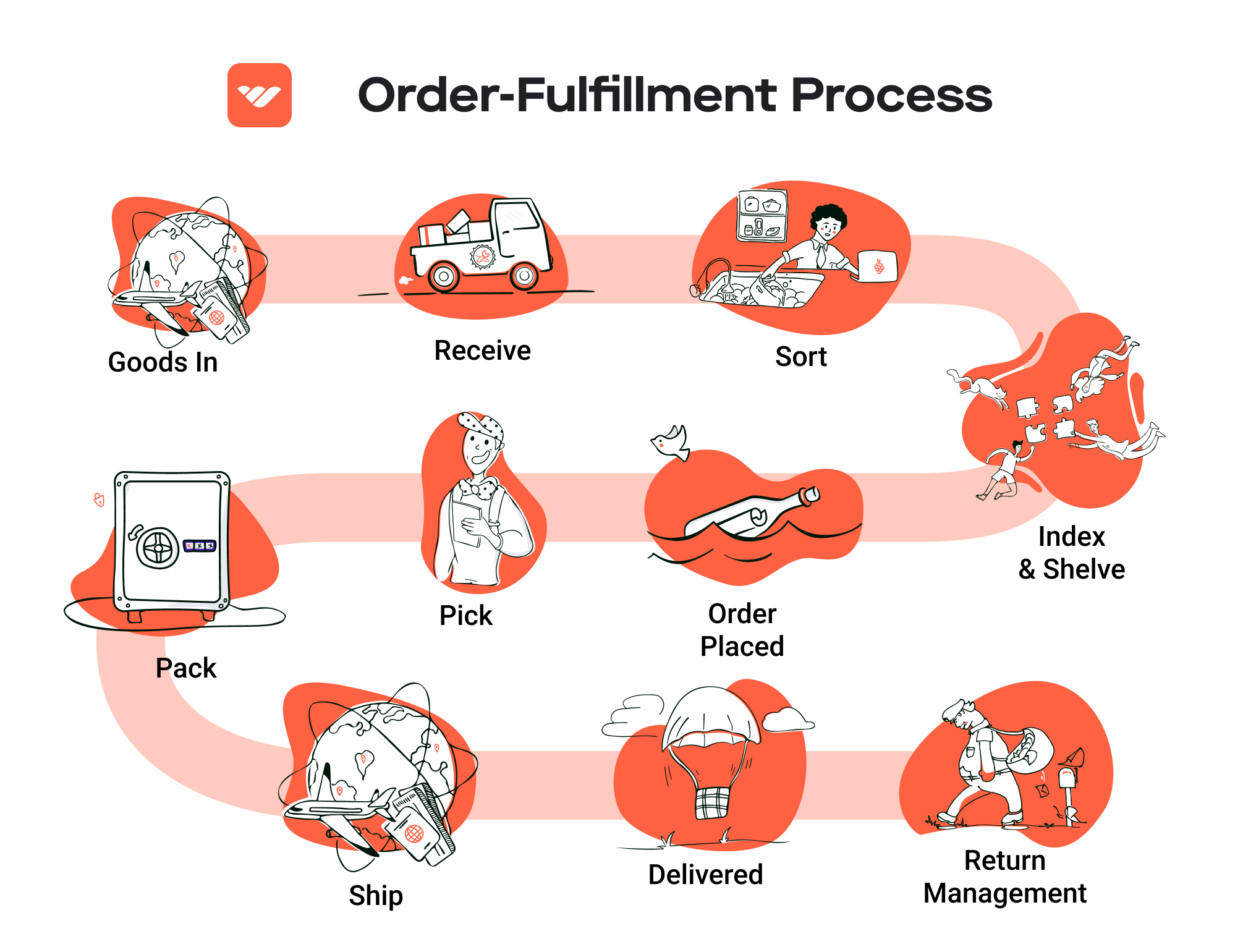
Cons of Fulfillment by Amazon (FBA)
1. High Fees
While FBA can simplify logistics, it comes at a cost. Amazon charges various fees, including storage fees and fulfillment fees, which can eat into profit margins. Sellers need to be mindful of these fees and factor them into their pricing strategies.
2. Strict Inventory Rules
Amazon has specific guidelines regarding inventory management, packaging, and shipping. Sellers must adhere to these rules, which can be stringent. Failure to comply can lead to additional fees or even account suspension.
3. Commingling Risks
FBA utilizes a practice called commingling, where products from different sellers are stored together. This can pose a risk for sellers, as they might receive returns or inventory that does not belong to them, complicating the returns process and potentially impacting their brand reputation.
4. Loss of Control
Using FBA means relinquishing some control over the fulfillment process. Sellers depend on Amazon’s logistics and customer service, which may not always align with their brand values or customer service expectations.
5. Seasonal Storage Fees
During peak seasons, such as the holiday season, Amazon imposes higher storage fees for inventory. This can significantly impact profitability if sellers are not prepared for the increased costs.
Who is FBA Best For?
Fulfillment by Amazon is particularly suited for:
-
Small to Medium-Sized Businesses: FBA is an excellent option for businesses that want to scale without the burden of managing logistics. The service allows smaller sellers to compete with larger brands by leveraging Amazon’s vast infrastructure.
-
Online Retailers with High Sales Volume: Sellers who have a consistent sales volume can benefit from the economies of scale that FBA offers, allowing them to reduce shipping costs and improve delivery times.
-
Entrepreneurs Looking to Expand: For entrepreneurs aiming to diversify their sales channels, FBA provides the flexibility to fulfill orders from multiple platforms, making it easier to grow their business.
-
Brands Focused on Customer Experience: Businesses that prioritize customer satisfaction can leverage Amazon’s trusted customer service and fast shipping to enhance their brand reputation.
In conclusion, while Fulfillment by Amazon offers a robust solution for managing e-commerce logistics, it is essential for sellers to weigh the benefits against the potential drawbacks. Understanding how FBA aligns with their business goals will enable sellers to make informed decisions about utilizing this powerful fulfillment option.
Core Services Offered by Fulfillment Centers
Inventory Management & Warehousing
Inventory management and warehousing are foundational services provided by fulfillment centers, crucial for e-commerce businesses aiming to optimize their logistics. This service encompasses the storage, organization, and tracking of inventory within a fulfillment center’s facilities.
What It Is:
Fulfillment centers utilize sophisticated warehouse management systems (WMS) to monitor stock levels, manage reordering processes, and ensure that products are stored efficiently. This includes real-time tracking of inventory across multiple locations, which allows businesses to maintain optimal stock levels and minimize the risk of overstocking or stockouts.
Benefits:
1. Cost Efficiency: By leveraging the economies of scale that fulfillment centers provide, e-commerce businesses can significantly reduce warehousing costs. Instead of maintaining their own facilities, businesses can tap into shared spaces that optimize space utilization.
2. Enhanced Accuracy: Automated inventory tracking minimizes human error, ensuring that e-commerce businesses have accurate data on stock levels. This leads to better decision-making regarding restocking and demand forecasting.
3. Proactive Management: With real-time inventory insights, businesses can proactively manage their stock, avoiding lost sales due to unavailable products and reducing excess inventory that ties up capital.
Pick and Pack Services
Pick and pack services are integral to the order fulfillment process, directly impacting the speed and accuracy of order delivery.
What It Is:
This service involves the selection (picking) of products from the warehouse based on customer orders, followed by packing those items securely for shipment. Fulfillment centers employ trained staff and automated systems to ensure that orders are fulfilled accurately and efficiently.
Benefits:
1. Speedy Fulfillment: With streamlined processes, fulfillment centers can significantly reduce the time it takes to pick and pack orders. This efficiency is crucial for meeting customer expectations for fast delivery, especially in a competitive e-commerce landscape.
2. Customization: Many fulfillment centers offer customizable packing options that enhance the unboxing experience for customers. This can include branded packaging, personalized messages, and other value-added services that reinforce brand identity.
3. Scalability: As e-commerce businesses grow, their order volumes can fluctuate. Fulfillment centers can easily scale their pick and pack operations to accommodate increased demand without requiring additional resources from the business itself.
Kitting and Assembly
Kitting and assembly services are designed to streamline the process of preparing products for sale, particularly for businesses that offer bundled products or require assembly before shipping.
What It Is:
Kitting involves grouping individual items together to create a single product or package, while assembly refers to the construction of products from multiple components. Fulfillment centers can handle both processes, ensuring that products are ready for sale and shipment.
Benefits:
1. Simplified Operations: By outsourcing kitting and assembly to fulfillment centers, e-commerce businesses can focus on core activities such as marketing and sales, rather than logistics and assembly.
2. Improved Efficiency: Fulfillment centers often have specialized equipment and trained personnel that can handle kitting and assembly more efficiently than an in-house team. This leads to faster turnaround times and reduced labor costs.
3. Enhanced Customer Experience: Offering kitted products or assembled items can improve customer satisfaction, as they receive ready-to-use products. This can also increase average order value, as customers may be more inclined to purchase bundled items.
Returns Management (Reverse Logistics)
Returns management, often referred to as reverse logistics, is a critical service provided by fulfillment centers, particularly in the e-commerce sector where returns rates can be high.
What It Is:
Returns management involves the process of handling products that customers return after purchase. This includes receiving returned items, inspecting them, restocking them, and managing the associated paperwork and customer communication.
Benefits:
1. Streamlined Process: Fulfillment centers provide a structured approach to managing returns, reducing the burden on e-commerce businesses. This includes efficient processing of returns, which can enhance customer satisfaction and loyalty.
2. Inventory Control: By effectively managing returns, fulfillment centers help businesses maintain accurate inventory levels. Returned items can be quickly reprocessed and made available for resale, minimizing losses.
3. Data Insights: Many fulfillment centers offer analytics related to returns, allowing businesses to identify trends and potential issues with products. This data can inform product development and inventory management strategies, leading to improved overall performance.
In summary, leveraging the core services offered by fulfillment centers can significantly enhance an e-commerce business’s operational efficiency, customer satisfaction, and scalability. By understanding and utilizing these services, business owners can focus on growth while ensuring that their logistics run smoothly.
How to Choose a Fulfillment Partner: A 6-Point Checklist
Location & Warehouse Network
Importance: The geographical location of your fulfillment partner’s warehouses can significantly affect shipping times and costs. A strategically located network allows for faster delivery to your customers, which is crucial for maintaining a competitive edge in e-commerce.
Questions to Ask:
– How many warehouses do you operate, and where are they located?
– Can you distribute my inventory across multiple locations to minimize shipping times?
– What is your average shipping time to major markets, and how do you handle international shipping?
– Do you have any partnerships with local carriers that could reduce shipping costs?
Technology & Integrations
Importance: A robust technology platform is essential for efficient order management, inventory tracking, and seamless integration with your e-commerce systems. The right technology can streamline operations, reduce errors, and improve customer satisfaction.
Questions to Ask:
– What kind of order management system (OMS) do you use, and how does it integrate with popular e-commerce platforms like Shopify, WooCommerce, or Magento?
– Do you offer real-time inventory tracking and reporting capabilities?
– How do you handle returns and exchanges through your system?
– Are there any additional fees for integrations with my current systems?
Specializations (e.g., cold storage, oversized items)
Importance: Depending on your product type, you may need a fulfillment partner with specific capabilities. For instance, businesses selling perishable goods or oversized items require specialized handling and storage solutions.
Questions to Ask:
– Do you have experience handling my specific product category (e.g., food and beverage, apparel, electronics)?
– What specialized services do you offer, such as cold storage, kitting, or assembly?
– How do you manage inventory for products with special handling requirements?
– Can you accommodate seasonal fluctuations in inventory needs?
Scalability & Capacity
Importance: As your business grows, your fulfillment partner must be able to scale operations accordingly. A partner with sufficient capacity can handle increased order volumes without compromising service quality.
Questions to Ask:
– How do you manage scaling operations during peak seasons, such as holidays or sales events?
– What is your current capacity for handling orders, and how quickly can you increase that capacity if needed?
– Have you worked with businesses that have scaled rapidly? Can you share any success stories?
– What processes do you have in place for managing inventory fluctuations?
Pricing and Contracts
Importance: Understanding the pricing structure and contract terms is essential to avoid unexpected costs that can impact your profit margins. Transparent pricing models help you make informed decisions based on your budget and growth plans.
Questions to Ask:
– What is your pricing model? Are there any hidden fees for services such as storage, picking, or packing?
– Do you offer volume discounts or incentives for long-term contracts?
– What are the terms of cancellation or changes to the contract?
– Can you provide a detailed breakdown of all potential costs associated with fulfillment?
Customer Support & Reviews
Importance: Reliable customer support is crucial for resolving issues quickly and maintaining smooth operations. Additionally, researching reviews and testimonials can provide insights into a partner’s reputation and performance.
Questions to Ask:
– What kind of customer support do you offer (e.g., dedicated account manager, 24/7 support)?
– How do you handle issues such as lost shipments or inventory discrepancies?
– Can you provide references or case studies from current or past clients?
– What is your average response time for customer inquiries or support requests?
Conclusion
Choosing the right fulfillment partner is a critical decision that can significantly impact your e-commerce business’s success. By using this checklist, you can methodically evaluate potential partners based on their location, technology capabilities, specializations, scalability, pricing, and customer support. Taking the time to ask the right questions will help you find a partner that aligns with your business goals and enhances your operational efficiency. Remember, a solid partnership in fulfillment can lead to improved customer satisfaction, reduced costs, and ultimately, increased sales.
Understanding Fulfillment Pricing: A Breakdown of Common Fees
Initial Setup Fees
When engaging a fulfillment company, one of the first costs you might encounter is the initial setup fee. This fee typically covers the administrative and technical costs associated with onboarding your business into the fulfillment provider’s system. Depending on the provider, this can include account setup, integration with your e-commerce platform, and initial consultations.
The calculation of setup fees varies widely among providers. Some may charge a flat fee, while others might base it on the complexity of your operations or the number of products you need to integrate. It’s important to clarify what services are included in this fee to avoid unexpected costs later.
Receiving Fees
Receiving fees are incurred when your inventory arrives at the fulfillment center. This fee typically covers the labor involved in unloading, inspecting, and entering your products into the warehouse management system.
Receiving fees are often calculated based on the volume or weight of the shipment, the number of SKUs, or the time taken to process the incoming inventory. For instance, a fulfillment center may charge a fee per pallet received or per item. Understanding these fees can help you budget more accurately, especially if you anticipate frequent shipments.
Storage Fees (per pallet/bin)
Once your products are in the fulfillment center, storage fees come into play. These fees are charged for the space your inventory occupies within the warehouse. Storage fees can be calculated in several ways, but are most commonly charged per pallet or per bin.
Many fulfillment providers offer tiered pricing based on the volume of inventory you store. For example, the first few pallets may be charged at a higher rate, while additional pallets may receive a discount. Some providers may also implement long-term storage fees, which apply if your inventory remains in the warehouse for an extended period. Understanding the storage fee structure is crucial for managing your inventory turnover effectively and minimizing costs.
Pick & Pack Fees (per item/order)
Pick and pack fees are incurred when an order is processed. This fee encompasses the costs associated with locating the items in the warehouse (picking), packing them for shipment, and preparing them for dispatch.
Fulfillment centers typically charge a per-item fee for picking and packing, which can vary based on the complexity of the order. For instance, packing fragile items may incur a higher fee due to the additional care required. Additionally, some providers may offer bulk discounts for larger orders or regular clients. It’s essential to discuss these fees upfront to understand how they will impact your overall fulfillment costs.
Shipping Fees
Shipping fees are one of the most significant costs in the fulfillment process and are usually based on the weight, dimensions, and destination of the package. Fulfillment companies partner with various carriers to offer competitive shipping rates, and these rates can fluctuate based on factors like the shipping method (standard vs. expedited), carrier choice, and seasonal demand.
The calculation of shipping fees can involve several components, including base shipping costs, surcharges for specific services (like residential delivery), and fuel surcharges. Many fulfillment providers also offer discounted shipping rates due to their volume of business, which can lead to significant savings for e-commerce businesses. Understanding the shipping fee structure is vital for pricing your products competitively and managing customer expectations regarding delivery times.
Conclusion: Tips for Getting an Accurate Quote
To obtain an accurate quote from a fulfillment provider, consider the following tips:
-
Be Transparent About Your Needs: Provide detailed information about your inventory, order volume, and expected growth. This will help the provider tailor their services and pricing to your business.
-
Request a Breakdown of Fees: Ask for a detailed itemization of all potential fees, including setup, receiving, storage, pick & pack, and shipping. This transparency will help you understand the total cost of fulfillment.
-
Inquire About Discounts: Many fulfillment centers offer volume discounts or promotions. Ask about these opportunities to potentially reduce your costs.
-
Evaluate Contract Terms: Review the terms carefully. Look for hidden fees, minimum order requirements, or long-term commitments that could affect your flexibility.
-
Compare Multiple Providers: Don’t settle for the first quote. Comparing multiple fulfillment providers will give you a clearer picture of the market rates and help you make an informed decision.
By understanding these common fees and how they are calculated, you can better navigate the complexities of fulfillment pricing and choose a provider that aligns with your business goals.
Frequently Asked Questions (FAQs) about Fulfillment
1. What is a fulfillment company?
A fulfillment company is a third-party logistics provider (3PL) that manages the storage, processing, and shipping of products for e-commerce businesses. They handle tasks such as inventory management, order picking and packing, shipping, and often return processing, allowing businesses to focus on growth and sales.
2. What is the difference between a warehouse and a fulfillment center?
A warehouse is primarily used for storing goods for long periods, while a fulfillment center is designed for the efficient processing and shipping of orders. Fulfillment centers emphasize speed and accuracy in order fulfillment, often integrating advanced technology for real-time inventory management and quick shipping.
3. What is a 3PL?
A 3PL, or third-party logistics provider, is a company that offers logistics services, including warehousing, transportation, and order fulfillment. Businesses partner with 3PLs to outsource their supply chain operations, allowing them to leverage the provider’s expertise, technology, and infrastructure.
4. How much do fulfillment services cost?
Costs for fulfillment services can vary widely depending on factors such as order volume, types of services required (e.g., kitting, returns processing), storage needs, and shipping methods. Generally, fulfillment costs include storage fees, picking and packing fees, and shipping costs. It’s essential to obtain quotes from multiple providers to find the best fit for your budget.
5. How do I choose the right fulfillment partner?
When selecting a fulfillment partner, consider factors like their experience in your industry, technology integration capabilities, shipping options, and customer service quality. Evaluate their fulfillment accuracy rates, shipping speeds, and overall reputation in the market. Conducting a trial or starting with a short-term contract can also help assess their fit for your business.
6. Can fulfillment companies handle international shipping?
Yes, many fulfillment companies offer international shipping services. They typically have established relationships with various carriers and can navigate the complexities of customs and duties. When choosing a fulfillment partner, confirm their ability to ship to your target international markets and understand their associated costs.
7. How does inventory management work with a fulfillment company?
Fulfillment companies utilize advanced inventory management systems that provide real-time tracking of stock levels, order status, and sales data. This technology allows businesses to monitor their inventory efficiently, set reorder alerts, and automate replenishment processes to prevent stockouts or overstock situations.
8. What are the benefits of using a fulfillment company?
Using a fulfillment company can lead to reduced shipping costs, improved order accuracy, faster delivery times, and enhanced customer satisfaction. Additionally, it allows businesses to scale operations quickly without the burden of managing warehousing and logistics in-house, freeing up resources for growth and marketing efforts.
9. What services do fulfillment companies typically offer?
Fulfillment companies usually provide a range of services, including inventory storage, order picking and packing, shipping and logistics, returns processing, and sometimes additional services like kitting, subscription box fulfillment, and custom packaging. The specific offerings may vary by provider, so it’s essential to review their service catalog.
10. How can I integrate my e-commerce platform with a fulfillment service?
Most fulfillment companies offer integration options with popular e-commerce platforms through API connections or pre-built integrations. This allows for seamless synchronization of inventory levels, order processing, and tracking information. Consult with your chosen fulfillment provider about their integration capabilities and any technical support they offer during the setup process.
Conclusion: Is Outsourcing Fulfillment the Right Move for Your Business?
Evaluating the Benefits of Outsourcing Fulfillment
Outsourcing your fulfillment can be a transformative decision for your e-commerce business. By partnering with a dedicated fulfillment service, you can save valuable time that can be redirected towards strategic initiatives, such as marketing and product development. This efficiency stems from the provider’s ability to handle inventory management, order processing, and shipping logistics seamlessly, allowing you to focus on scaling your operations rather than getting bogged down in day-to-day logistics.
Additionally, outsourcing fulfillment offers unparalleled scalability. As your business grows, a proficient fulfillment partner can adapt to your changing needs, providing access to a vast network of warehouses and shipping options. This scalability not only helps in managing increased order volumes but also allows you to reach new markets without the overhead costs associated with establishing additional warehouse locations.
Moreover, leveraging the expertise of a fulfillment service can significantly enhance your operational performance. These providers are seasoned in the complexities of logistics, including international shipping regulations, tariff management, and technology integration. Their experience can lead to cost savings, faster shipping times, and improved customer satisfaction—key drivers of repeat business and brand loyalty.
However, the success of this strategy hinges on selecting the right fulfillment partner. It’s essential to choose a provider that aligns with your business goals, understands your brand, and can deliver consistent quality service.
Take Action: Audit Your Current Shipping Process
To determine if outsourcing fulfillment is the right move for your business, conduct an audit of your current shipping and logistics processes. Evaluate your operational bottlenecks, shipping costs, and customer feedback on delivery experiences. This assessment will provide clarity on whether a fulfillment partner could enhance your efficiency and support your growth trajectory. Consider reaching out for quotes or consultations with potential fulfillment partners to explore your options further. Your path to scaling your e-commerce operations may just lie in the hands of a trusted fulfillment provider.
Important Disclaimer
⚠️ Important Disclaimer
The information in this guide is for educational purposes. Fulfillment services, pricing, and platform features change frequently. Always conduct your own due diligence and consult with providers directly before making business decisions.
